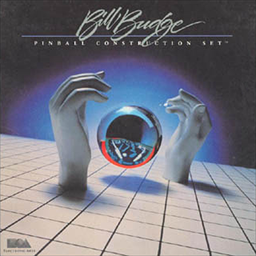
Pinball Construction Set is a video game by Bill Budge written for the Apple II. It was originally published in 1982 through Budge's own company, BudgeCo, then was released by Electronic Arts in 1983 along with ports to the Atari 8-bit computers and Commodore 64.
The Adventure Game Interpreter (AGI) is a game engine developed by Sierra On-Line. The company originally developed the engine for King's Quest (1984), an adventure game that Sierra and IBM wished to market in order to attract consumers to IBM's lower-cost home computer, the IBM PCjr.

Spy vs. Spy is a video game written by Michael Riedel for the Commodore 64 and published by First Star Software in 1984. A port for the Atari 8-bit computers was released simultaneously. It is a two-player, split-screen game, based on Mad magazine's long-running cartoon strip Spy vs. Spy, about the slapstick antics of two spies trying to kill each other with improbably elaborate traps and weapons.

B.C.'s Quest for Tires is an horizontally scrolling video game designed by Rick Banks and Michael Bate and published by Sierra On-Line in 1983. Versions were released for the Commodore 64, IBM PC, Atari 8-bit computers, ColecoVision, ZX Spectrum, MSX, and Apple II. Based on the comic strip B.C. by Johnny Hart, BC's Quest for Tires is similar to Irem's Moon Patrol from the previous year. A wheel-riding caveman is always moving forward through horizontally scrolling levels, and the player jumps or ducks as obstacles approach. The game's title is a play on the contemporaneous film Quest for Fire.
Cut & Paste is a word processor published in 1984 for Apple II series, Atari 8-bit computers, Commodore 64, IBM PC compatibles, and IBM PCjr. It is one of the few productivity releases from game developer and publisher Electronic Arts, along with the contemporaneous Financial Cookbook. In the UK it was distributed by Ariolasoft.

Shamus is a shooter with light action-adventure game elements written by Cathryn Mataga and published by Synapse Software. The original Atari 8-bit computer version was released on disk and tape in 1982. According to Synapse co-founder Ihor Wolosenko, Shamus made the company famous by giving it a reputation for quality. "Funeral March of a Marionette", the theme song from Alfred Hitchcock Presents, plays on the title screen.

Drol is a video game published by Broderbund in 1983. It was written for the Apple II by Benny Aik Beng Ngo, then ported to the Commodore 64 and Atari 8-bit computers. Versions were released for the SG-1000 in 1985 and Amiga in 1991.

Crossfire is a multidirectional shooter created by Jay Sullivan for the Apple II and published by On-Line Systems in 1981. Using keyboard-based twin-stick shooter controls, the player maneuvers a ship in a grid-like maze. Versions with joystick-control use the stick for movement and switch to firing mode when the button is held down.

Anteater is an arcade video game designed by Chris Oberth and released in 1982 by Tago Electronics. The player steers the tongue of the eponymous creature through a maze, retracting it when dangers approach. Though the arcade game was not a hit, it spawned a number of direct clones for home computers; Sierra's Oils Well became better known than the original. Oberth wrote an Apple II version of his own game for Datamost using a different title.

Frogger II: ThreeeDeep! is a video game released in 1984 by Parker Brothers for the Apple II, Atari 8-bit computers, Atari 2600, Atari 5200, ColecoVision, Commodore 64, and IBM PC compatibles. It is a sequel to the 1981 Konami Frogger arcade video game and has similar gameplay.
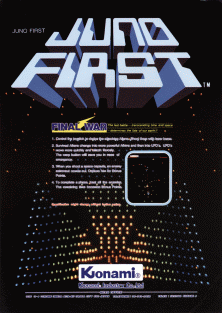
Juno First (ジュノファースト) is an arcade video game developed by Konami and released in 1983. It was licensed to Gottlieb in the United States. Juno First is a fixed shooter with a slightly tilted perspective, similar to Nintendo's Radar Scope from 1980. The game was ported to the Commodore 64, Atari 8-bit computers, MSX, IBM PC, and IBM PCjr.

Gateway to Apshai is an action-adventure game for the Commodore 64, ColecoVision and Atari 8-bit computers. It was developed by The Connelley Group and published by Epyx in 1983 as a prequel to Temple of Apshai. It is a more action-oriented version of Temple of Apshai, with smoother and faster graphics, streamlined controls, fewer role-playing video game elements, and fewer room descriptions.
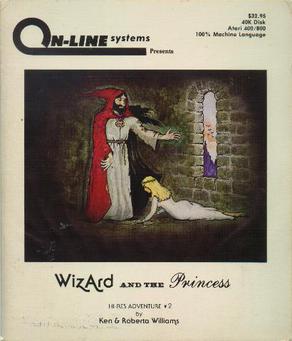
Wizard and the Princess is a graphic adventure game written for the Apple II and published in 1980 by On-Line Systems. It is the second installment in the Hi-Res Adventures series after Mystery House. Unlike its predecessor, which featured monochrome drawings, Wizard and the Princess introduced color graphics. Ports for the Atari 8-bit computers and Commodore 64 were released in 1982 and 1984 respectively. The 1982 self-booting disk version for IBM PC compatibles was renamed Adventure in Serenia.
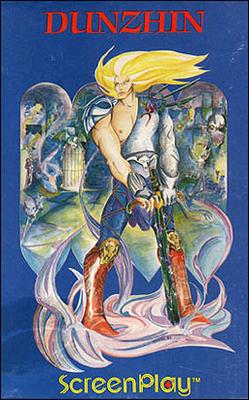
Warrior of Ras: Volume I - Dunzhin is a fantasy role-playing video game developed by Med Systems Software. It was released on the TRS-80 in 1982, then ported to the Apple II, Atari 8-bit computers, and Commodore 64. A self-booting IBM PC port added digitized speech.
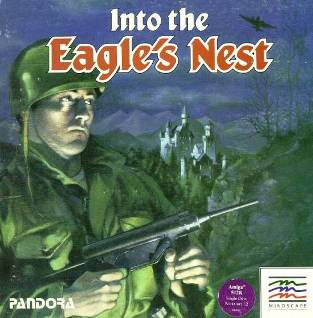
Into the Eagle's Nest is a video game developed by Pandora and published for Amiga, Amstrad CPC, Apple II, Atari 8-bit computers, Atari ST, Commodore 64, IBM PC compatibles, and ZX Spectrum starting in 1987.

Lode Runner's Rescue is a 1985 action game developed by Joshua Scholar for the Commodore 64 and Atari 8-bit computers as a follow-up to Doug Smiths's Lode Runner. Lode Runner was published by Broderbund, but the sequel was published under the Synapse Software name, a company acquired by Broderbund in 1984. Lode Runner's Rescue uses isometric projection to give a 3D feel.

Drelbs is a maze video game written by Kelly Jones for Atari 8-bit computers and published by Synapse Software in 1983. An Apple II port by Jonathan Tifft was released the same year. A Commodore 64 version followed in 1984 implemented by Miriam Nathan and William Mandel. The objective is to move the walls of the maze to make boxes. Some reviewers found the overall collection of elements to be eccentric and unique.
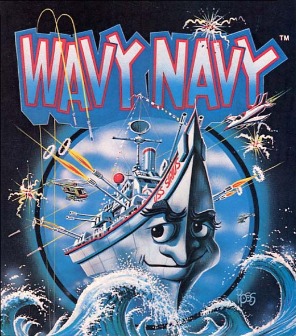
Wavy Navy is a video game designed by Rodney McAuley for the Apple II and published by Sirius Software in 1983. Versions for the Atari 8-bit computers and Commodore 64 were released the same year. Wavy Navy is a nautically themed fixed shooter with left and right controls to move the player's PT boat, but there is an additional vertical element as the boat moves up and down with the large ocean waves that scroll beneath it. The direction and speed of the waves vary per level. Some reviewers found that the movement of the waves added an interesting twist, while others called it too similar to other fixed shooters like Galaxian.
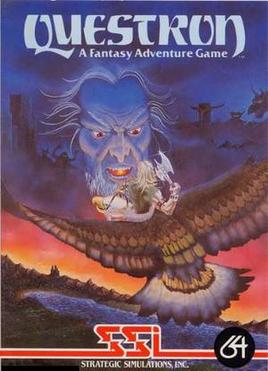
Questron is a 1984 game from Strategic Simulations, the first fantasy title from a company known for computer wargames. It was written by Charles Dougherty and Gerald Wieczorek and released for the Apple II, Atari 8-bit computers, and Commodore 64. A sequel, Questron II, was released in 1988.


















